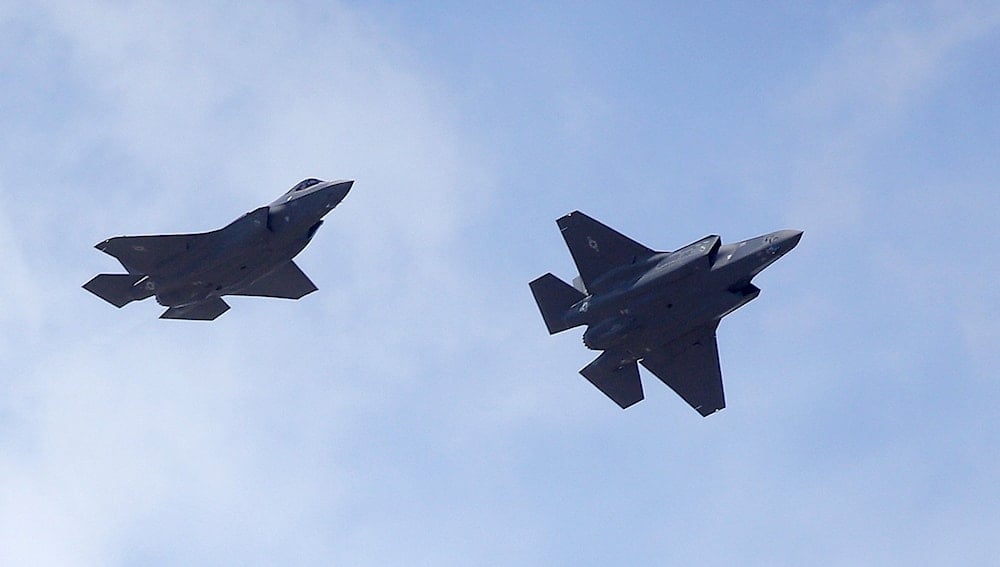F-35 near-misses over Yemen signal new risks for 'Israel': Forbes
US F-16 and F-35 fighter jets encountered heavy close-range fire from Ansar Allah during Operation Rough Rider, raising concerns over the safety of American and Israeli aircraft over Yemen.
-

Two F-35 jets arrive at their new operational base Wednesday, Sept. 2, 2015, at Hill Air Force Base, in northern Utah (AP)
US F-16 and F-35 fighter jets encountered heavy close-range fire from Ansar Allah air defenses during Operation Rough Rider, the two-month US aggression against Ansar Allah that was launched by President Donald Trump in mid-March, according to Forbes.
According to a Monday report by The New York Times, unspecified Ansar Allah air defenses came dangerously close to striking US fourth-generation F-16s and fifth-generation F-35s during the initial 30 days of Operation Rough Rider, raising concerns about potential American casualties. During the same period, Ansar Allah forces successfully shot down seven MQ-9 Reaper drones.
The potential downing of a US fighter jet and the resulting capture of a pilot by Ansar Allah forces presented a scenario that the current administration was determined to avoid, Forbes stated.
The loss of one of America's exclusively exported stealth fighters to Ansar Allah air defenses, which had previously been considered largely improvised and relatively rudimentary, would have dealt a severe blow to US fighter jet prestige while potentially jeopardizing future arms export agreements.
'Israel' faces similar risks
Forbes highlighted that the near-misses involving US F-35s during operations over Yemen carry significant consequences for "Israel" as well, particularly since the Israeli Air Force initiated its first long-range strikes against Ansar Allah in July 2024 following a successful drone attack by the group that reached Tel Aviv. In March, shortly after initiating Operation Rough Rider, the US advised "Israel" against carrying out further attacks.
Trump declared the Yemen ceasefire shortly after "Israel" conducted strikes following an Ansar Allah missile attack that had successfully hit its major airport near Tel Aviv.
While US Marine Corps F-35Bs conduct operations from amphibious assault ships and Navy F-35Cs launch from supercarriers positioned near Yemen's coast, "Israel" lacks comparable forward deployment capabilities for its F-35Is, forcing them to rely on aerial refueling to cover the more than 1,000-mile flight distance and severely limiting their available loiter time over Yemeni airspace during missions.
Given that Ansar Allah's air defenses have already posed risks to US F-35s, Israeli F-35Is conducting long-range missions could also face similar threats, and if one were to be shot down over Yemen, it would provide Ansar Allah with an unprecedented image of a victory, according to the US magazine.
Future Israeli F-35I sorties over Yemen will likely avoid operating at maximum combat capability to minimize risk exposure.

 3 Min Read
3 Min Read










